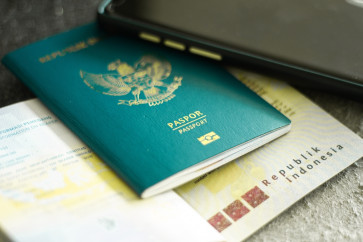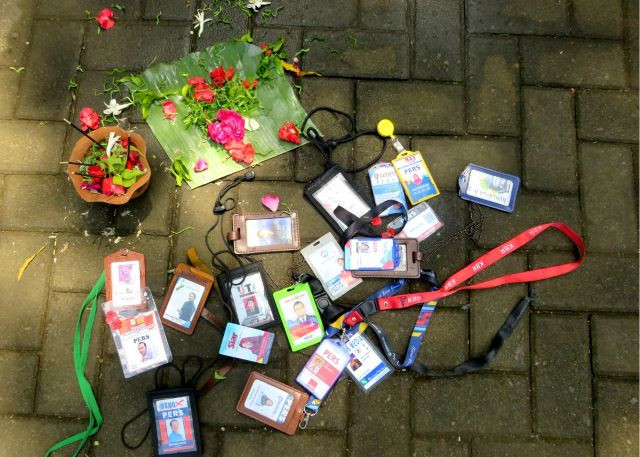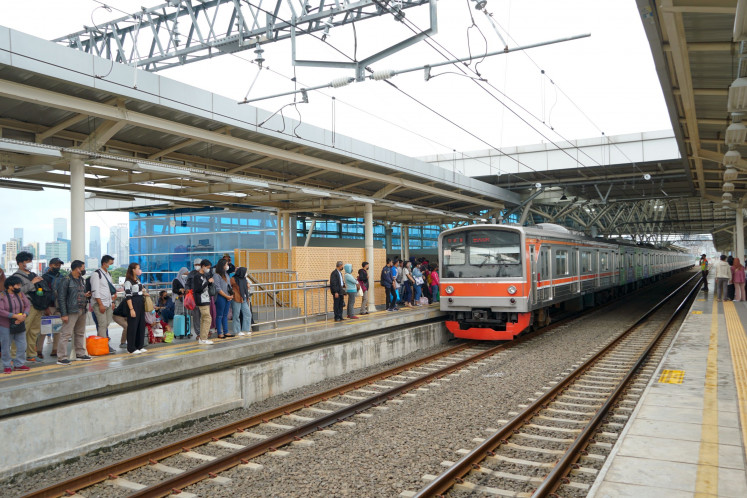Women, girls most at risk in disasters
The needs of women and girls are often neglected when natural disasters strike, putting them at a higher risk of sexual and reproductive health problems, development experts have warned
Change Size

T
he needs of women and girls are often neglected when natural disasters strike, putting them at a higher risk of sexual and reproductive health problems, development experts have warned.
The story of triplets being born to a mother displaced by the recent 7.4-magnitude earthquake and tsunami in Central Sulawesi has drawn media attention nationwide.
More importantly, it provided evidence that sexual and reproductive healthcare services are of utmost importance at times of calamity, according to experts from the United Nations Population Fund (UNFPA).
With limited access to prenatal care, displaced women who bear children in temporary camps may suffer from childbirth complications, warned Branwen Millar, the humanitarian project coordinator at the UNFPA Asia-Pacific Regional Office (APRO).
“During disasters, babies keep being born and women and girls have specific vulnerabilities and needs that need to be met,” she said on Tuesday.
Millar spoke during a two-day media workshop in Bangkok that began on Monday, held on the 25th anniversary of the International Conference on Population and Development (ICPD) and the 50th anniversary of the UNFPA.
Citing collated data, Millar said about 1.5 million people were affected by a series of strong tremors, a tsunami and the severe liquefaction of soil in Palu and Donggala in Central Sulawesi on Sept. 28. More than 2,200 people were killed in the devastating earthquake, while around 4,600 others were injured and more than 223,000 people displaced.
The disasters reportedly impacted more than 351,000 women of reproductive age, including some 45,300 who were pregnant.
More than 14,000 will give birth in the next three months and around 2,100 are expected to experience obstetric complications that need emergency care, Millar said.
“One of the things UNFPA did was to support the Indonesian government [...] by deploying midwives,” she said, adding that the UN body deployed 65 midwives to functioning health facilities and displacement camps.
“[They] helped ensure safe delivery, significantly reducing risks for mothers and newborns.”
UNFPA APRO communications officer Roy Wadia said during disasters, more attention was paid to the most obvious needs such as food, water and shelter, but few thought of the plight of pregnant women or menstruating girls who, without sanitary napkins, are unable to move around freely.
“In many crises, we know from evidence that women and girls who cannot move around because of hygiene reasons haven’t been able to access aid [and] relief supplies. They cannot go to the point of collection for food supplies [and are at a] huge disadvantage,” he said.
The UNFPA has provided US$2.5 million in humanitarian assistance through its Indonesia office, having allocated $2.1 million for disaster mitigation in Central Sulawesi and another $400,000 to help the victims of strong earthquakes that hit Lombok, West Nusa Tenggara, in August.
Within the first few days after the devastating Palu earthquake struck, the UN body also brought in supplies for women and girls, including hygiene and reproductive health kits, Wadia said.
While restricted access to supplies remains one of the biggest challenges for the UNFPA’s humanitarian efforts in disaster-hit areas, the organization has helped alleviate the burden in Palu.
“With the help of the [Indonesian] Military, the supplies were deployed in many different ways to the affected areas,” Wadia said.
According to UN statistics, an average of 154 natural disasters occur every year in the Asia-Pacific region, accounting for around 44 percent of all disasters worldwide.
Ninety-five percent of all people affected by a disaster in 2016 lived in the Asia-Pacific region and 690 million people living there have been affected by disasters in the past five years, the data says.









